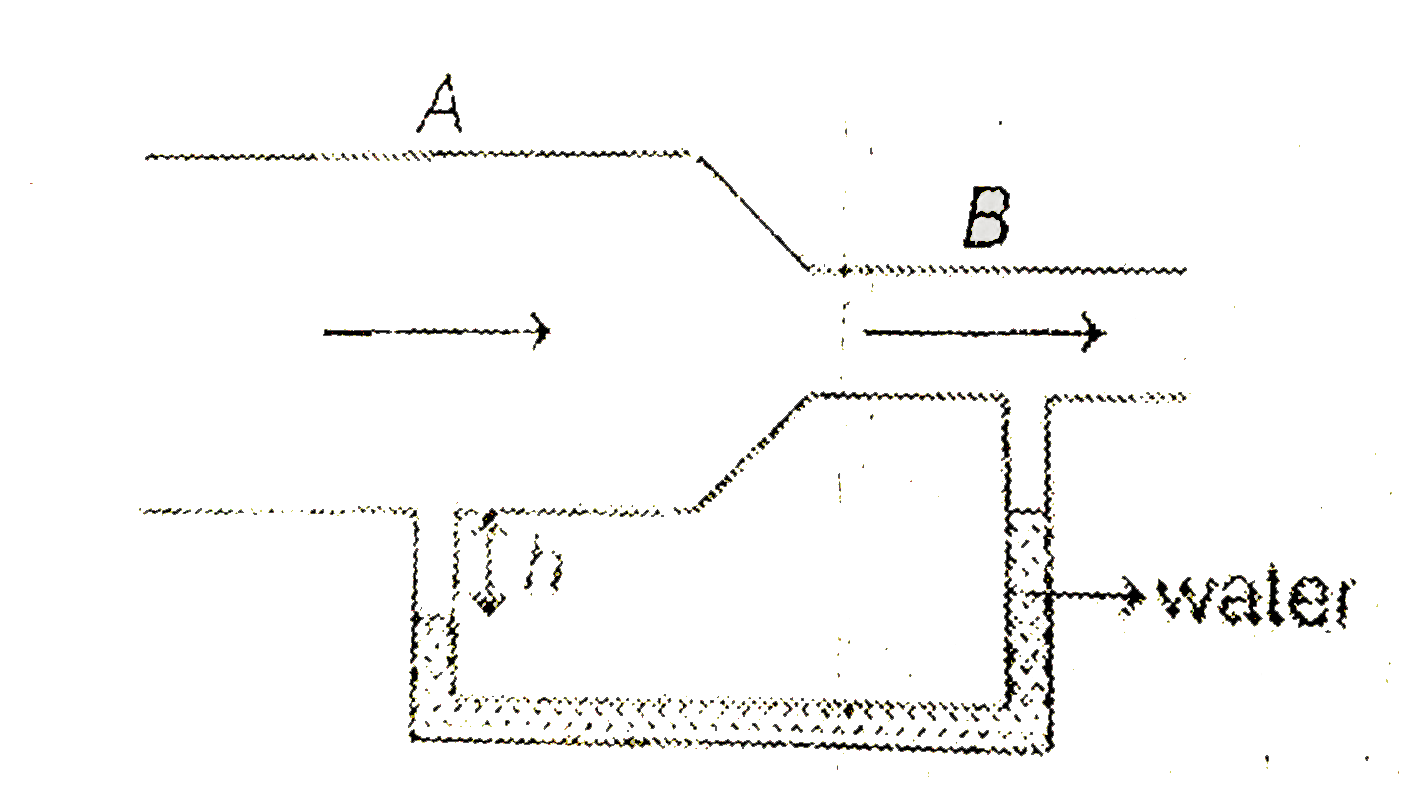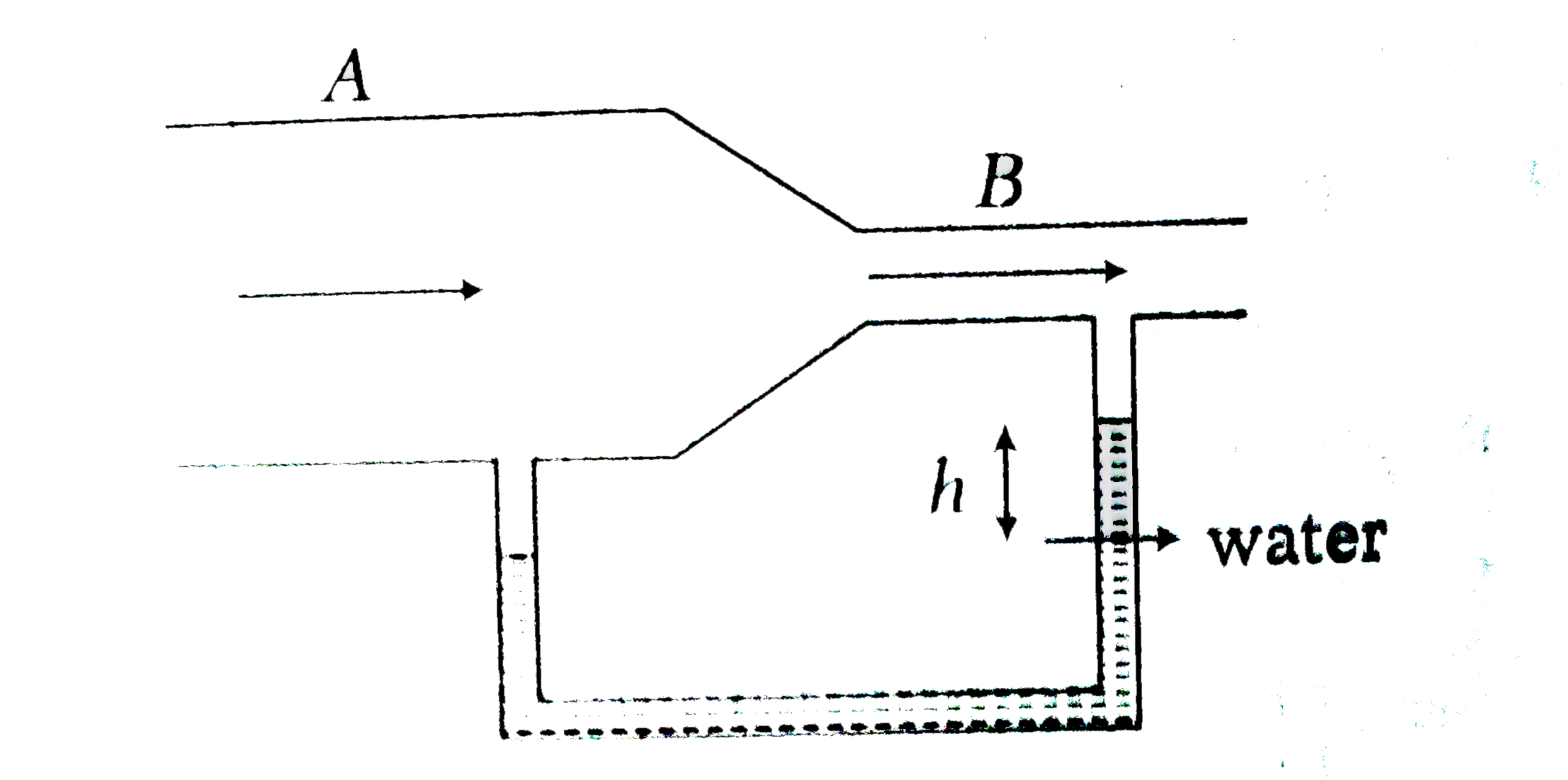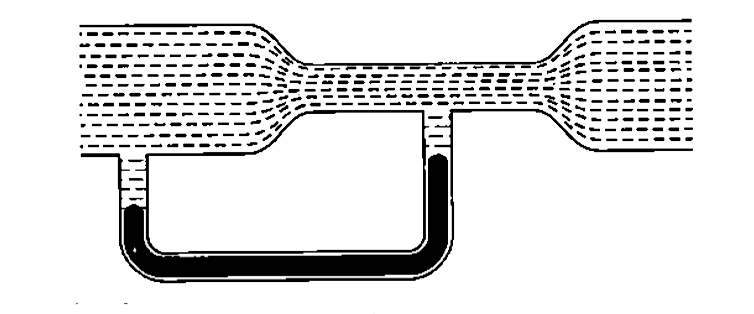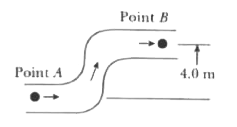Air is blown through a pipe AB at a rate of 15 litres per minute. The cross sectional area of the broad portion of the pipe AB is 2cm2 and that of the narrow portion is 0.5cm2. The difference in water level h is (ρair=1.32kg/m3)

5.26mm
1.54mm
4.38mm
3.26mm
The correct Answer is:B
Step by step video, text & image solution for Air is blown through a pipe AB at a rate of 15 litres per minute. The cross sectional area of the broad portion of the pipe AB is 2 cm^(2) and that of the narrow portion is 0.5 cm^(2). The difference in water level h is (rho_("air") = 1.32 kg//m^(3)) by Physics experts to help you in doubts & scoring excellent marks in Class 11 exams.
Topper's Solved these Questions
- BOOK - DC PANDEYCHAPTER - PROPERTIES OF MATTEREXERCISE - More than one option is correct21videos
PROPERTIES OF MATTER
- BOOK - DC PANDEYCHAPTER - PROPERTIES OF MATTEREXERCISE - Comprehension32videos
PROPERTIES OF MATTER
- BOOK - DC PANDEYCHAPTER - PROPERTIES OF MATTEREXERCISE - Integer8videos
PROPERTIES OF MATTER
- BOOK - DC PANDEYCHAPTER - PROJECTILE MOTIONEXERCISE - Level - 2 Subjective10videos
PROJECTILE MOTION
- BOOK - DC PANDEYCHAPTER - RAY OPTICSEXERCISE - Integer type q.15videos
RAY OPTICS
Similar Questions
Water is flowing through a horizontal pipe at the rate of 13 litre per second. Calculate the velocity of flow at a point where diameter is 3 cm.
View SolutionA liquid flows through a horizontal pipe of varying cross section at a rate of 10 litres per minute. Find the velocity of liquid at a point where radius of pipe is 5 cm.
View Solution
Knowledge Check
- Question 1 - Select One
Air is blown through a pipe AB at a rate of 10Lmin−1. The cross-sectional area of the broad portion of the pipe AB is 2cm2 and that of the narrow portion is 0.5cm2. The difference in water level h is (density of air =1.32kgm−3)
 A16 mmB1.5 mmC10 mmD3.2mm
A16 mmB1.5 mmC10 mmD3.2mm - Question 2 - Select One
An ideal fluid flows through a pipe of circular cross section made of two sections with diameters 2.5 cm and 3.75 cm. The ratio of the velocities in the two pipes is
A9:4,B3:2,C√3:√2D√2:√3 - Question 3 - Select One
An ideal fluid flows through a pipe of circular cross section made of two section with diamters 2.5 cm and 9.76 cm. The ratio of the velocities in the two pipes is
A9:4B3:2C√3:√2D√2:√3
Water flows through the tube shown in figure. The areas of cross section of the wide and the narrow portions of the tube are 5cm2and2cm2 respectively. The rate of flow of water through the tube is 500cm3s−1 . Find the difference of mercury levels in the U-tube.
 View Solution
View SolutionWater flows through the tubes shown in figure. The areas of cross-section of the wide and the narrow portions of the tube are 5cm2 and 2cm2 respectively. The rate of flow of water through the tube is 500cm3/s. Find the difference of mercury levels in the U-tube.
 View Solution
View SolutionInternal cross sectional area of a pipe is 100 cm2. How much water can be contained in 10m length of the pipe.
View SolutionWater form a pipe is coming at a rate of 100 liters per minute. If the radius of the pipe is 5 cm, the Reynolds number for the flo0w is : (density of water =1000kg/m3, coefficient of viscosity of water =1mPas)
View SolutionOil ( ρ=925kg/m3) is flowing through a pipeline at a constant speed when it encounters a vertical bend in the pipe raising it 4.0 m. The cross-sectional area of the pipe does not change . What is the difference in pressure (pB−pA) in the portions of the pipe before and after the rise ?
 View Solution
View Solution

